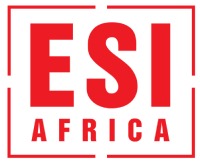African utilities share Mission 300 path at APUA conference in Cairo
The Association of Power Utilities of Africa (APUA)’s 21st Congress is being held in Cairo, Egypt until 3 October
Energy leaders from across the continent shared their targets and strategies on reaching Mission 300 goals at the APUA Congress, under the theme Energy Transition Challenges.
On day one of the congress Henry Paul Batchi, Director of Power Systems at the African Development Bank (AfDB), moderated a high-level panel discussion, opening the session by commending Egypt for its remarkable strides in renewable energy integration.
In response to his question on how the country achieved this, Gaber Desouki, Chairman of the Egyptian Electricity Holding Company (EEHC), pointed to several decisive enablers:
- Public tenders that accelerated renewable energy projects,
- Feed-in tariffs that successfully attracted private capital,
- Expansion of the transmission network to accommodate diverse energy sources, and
- Grid modernisation to integrate renewable energy effectively.
African utilities: Mission 300
Looking ahead, Desouki emphasised that the “utility of the future” in Egypt will be built on sound financial sustainability.
From Southern Africa, Justin Loongo, Managing Director of ZESCO in Zambia, underscored the country’s strategic geographic position for regional power connectivity. He outlined Zambia’s Mission 300 strategies, including:
- Strengthening interconnectors, with plans to extend links eastwards by 2028 to enable trade with East Africa.
- Exploring new connections with the DRC, Malawi and Mozambique.
- Advancing the ZIZABINA interconnector between Zambia and Zimbabwe.
- Implementing policy reforms such as open access, net metering and support for micro-generators.
Loongo envisions a future utility that is self-sufficient with surplus power for export.
Shifting to West Africa, Khroumbaly Mohamed, Director-General of SOMELEC in Mauritania, highlighted that the country already generates 40% of its power from renewable sources. However, challenges persist, including a weak grid that requires battery storage solutions for stabilisation. Mohamed noted that Mauritania is opening its market to Independent Power Producers (IPPs) and advancing rural electrification through mini-grids, while also planning to connect with Morocco to boost supply.
Meanwhile, Papa Toby Gaye, Director-General of SENELEC in Senegal, emphasised the country’s impressive 98% urban energy access rate. Senegal has set a target to achieve 40% renewable energy by 2030, with IPPs expected to contribute 60% of generation. Key pillars guiding this ambition include:
- Competitive bidding for projects.
- Implementation of cost-reflective tariffs.
- Greater participation in regional energy trade.
- Diversification of the energy mix.
- Mobilising financial support for expansion.
For Senegal, Gaye said, the utility of the future will harness both gas and green resources to maximise value.
As the discussions revealed, while the contexts differ, African utilities share a common drive: to leverage innovation, policy reform and regional cooperation to achieve their Mission 300 goals and accelerate the continent’s energy transition.
Cover photo: By ESI Africa



